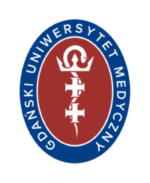Marine Biotech could produce treatment for cystic fibrosis
Of all the biotech areas marine biotechnology usually has the richest debate concerning its potential and the technologies which may arise from it. This is partially because marine science is a vast subject, encompassing a plethora of disciplines ranging from molecular biology to oceanology.
All to often marine science is seen only in the context of fisheries or climate studies. While these are clearly important research areas it is vital that the rich resource that the marine environment represents is not ignored by ignorance of its potential for enhancing both pure and applied life science research.
The recently published ScanBalt position paper on Marine Biotechnology seeks to address this situation, and place marine biotech into the discussion regarding FP7. Many high class marine researchers, although working on a rich vein of scientific and commercial potential, are isolated and fragmented both from each other and the great life science community. By linking together marine researchers but also integrating them with, for example, medical researchers true interdisplinery innovation will have more opportunity to take place.
One example, to illustrate this potential. Researchers in Florida, at the University of North Carolina Wilmingtons Center for Marine Science, recently made an important discovery when researching the ‘red tides’, the toxic algal blooms which frequently affect the coastal environment. They found two new compounds which could treat the mucus build up associated with cystic fibrosis and other lung diseases. Immediately identified as true ‘bench to bedside’ research, the discovery has forged a licensing deal between the University and aaiPharma. This is joined up research in the best sense, as the original research is funded by the National Institute of Environmental Health in a programme designed to allow scientists to develop products, seek patents and move products into the market. All the more impressive is that the funding was only awarded in summer 2004.
Source: University of North Carolina at Wilmington












